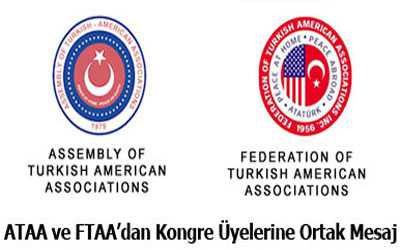The
Story of "Bad Angel": Pima Air and Space Museum…
On the Saturday following
Thanksgiving 2013, Ms. Karen, my 94-year-old father, Bill Gressinger, and I were
visiting Pima Air and Space Museum.
We were in Hanger #4 to view
the beautifully restored B-29, when I happened to take notice of a P-51 Mustang
near the big bomber. It’s name ? "Bad Angel".
P-51 Mustang "Bad Angel" in
Hanger #4 at Pima Air and Space Museum.
I was admiring its aerodynamic
lines and recalled enough history to know that until the Mustangs came into
service, the skies over the Pacific Ocean were dominated by Japanese
Zeros.
Then something very strange caught my eye. Proudly displayed on the
fuselage of ‘Bad Angel’ were the markings of the pilot’s kills: seven Nazis; one
Italian; one Japanese AND ONE AMERICAN. Huh? "Bad Angel" shot down
an American airplane?
Kill marks on "Bad
Angel”
Was it a terrible mistake?
Couldn’t be. If it had been an unfortunate misjudgment, certainly the pilot
would not have displayed the American flag.I knew there had to be a good
story here. Fortunately for us, one of the Museum’s many fine docents was on
hand to tell it.
********************
In 1942, the United States
needed pilots for its war planes lots of war planes; lots of pilots. Lt. Louis
Curdes was one. When he was 22 years old, he graduated flight training school
and was shipped off to the Mediterranean to fight Nazis in the air over Southern
Europe.
Lt. Louis
Curdes.
He arrived at his 82nd Fighter
Group, 95th Fighter Squadron in April 1943 and was assigned a P-38 Lightning.
Ten days later he shot down three German Messerschmitt Bf-109
fighters.A few weeks later, he downed
two more German Bf -109’s. In less than a month of combat, Louis was an
Ace.
During the next three months,
Louis shot down an Italian Mc.202 fighter and two more Messerschmitts before his
luck ran out. A German fighter shot down his plane on August 27, 1943 over
Salerno, Italy.Captured by the Italians, he
was sent to a POW camp near Rome. No doubt this is where he thought he would
spend the remaining years of the war. It wasn’t to be. A few days later, the
Italians surrendered. Louis and a few other pilots escaped before the Nazis
could take control of the camp.
One might think that such
harrowing experiences would have taken the fight out of Louis, yet he
volunteered for another combat tour. This time, Uncle Sam sent him to the
Philippines where he flew P-51 Mustangs.
Soon after arriving in the Pacific
Theater, Louis downed a Mitsubishi reconnaissance plane near Formosa. Now he was
one of only three Americans to have kills against all three Axis Powers:
Germany, Italy, and Japan.
Pilot Lt. Louis Curdes in his
P-51 Mustang "Bad Angel”.
Up until this point, young Lt.
Curdes combat career had been stellar. His story was about to take a twist so
bizarre that it seems like the fictional creation of a Hollywood
screenwriter.
While attacking the
Japanese-held island of Bataan, one of Louis wingmen was shot down. The pilot
ditched in the ocean. Circling overhead, Louis could see that his wingman had
survived, so he stayed in the area to guide a rescue plane and protect the
downed pilot.
It wasn’t long before he noticed another, larger airplane,
wheels down, preparing to land at the Japanese-held airfield on Bataan. He moved
in to investigate. Much to his surprise the approaching plane was a Douglas C-47
transport with American markings.
He tried to make radio contact, but without
success. He maneuvered his Mustang in front of the big transport several times
trying to wave it off. The C-47 kept head to its landing target. Apparently the
C-47 crew didn’t realize they were about to land on a Japanese held island, and
soon would be captives.
Lt. Curdes read the daily
newspaper accounts of the war, including the viciousness of the Japanese
soldiers toward their captives. He knew that whoever was in that American C-47
would be, upon landing, either dead or wish they were. But what could he
do?
Audaciously, he lined up his
P-51 directly behind the transport, carefully sighted one of his .50 caliber
machine guns and knocked out one of its two engines. Still the C-47 continued on
toward the Bataan airfield. Curdes shifted his aim slightly and knocked out the
remaining engine, leaving the baffled pilot no choice but to ditch in the
ocean.
One of "Bad Angel’s" .50
caliber machine guns built into its wings.
The big plane came down
to it wings. in one piece about 50 yards
from his bobbing wingman. At this point, nightfall and low fuel forced Louis to
return to base.The next morning, Louis flew
cover for a rescuing PBY that picked up the downed Mustang pilot and 12
passengers and crew, including two female nurses, from the C-47. All survived,
and later, Lt. Curdes would end up marrying one of these
nurses.
.50 caliber ammo for P-51
Mustangs.
For shooting down an unarmed
American transport plane, Lt. Louis Curdes was awarded the Distinguished Flying
Cross. Thereafter, on the fuselage of his P-51 "Bad Angel", he proudly displayed
the symbols of his kills: seven German, one Italian, one Japanese
and one American
flag.
